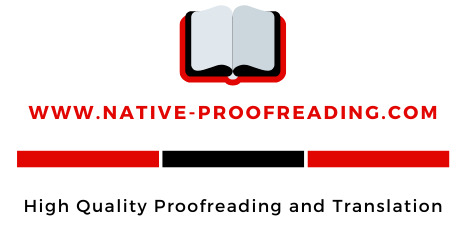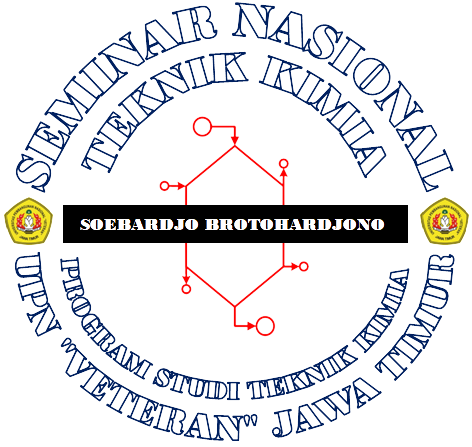
Identification of Flavonoid Compounds in Ethanol Extract of Majapahit plant (Crescentia cujete) Leaves and their Potential as Anticancer
Abstract
The Majapahit plant is commonly found in Indonesia but is rarely used due to a lack of information about its potential. One of the secondary metabolites commonly found in this plant are flavonoids. Therefore, this study aims to determine the distribution of flavonoid compounds in the Majapahit plant, particularly their potential as anticancer activty. Leaf material from Majapahit plants was extracted using the maceration technique, while the flavonoid compounds in the extract were identified using LCMS (Shimadzu LCMS-8040 LC/MS). The identification results showed that about 97 compounds were detected, including 14 flavonoids. The flavonoid compounds found include Quercetin, Chlorogenic acid, Kaempferol 3-O rhamnoside, Acacetin 7-rutinoside, Fortunellin, Kaempferol 3-[6”-(3-hydroxy-3-methyl glutarl) glucoside], Didymin, Diosmin, Hesperidin, Rutin, Citrusoside C, Citrusoside D, Narirutin 4'-glucoside, and Kaempferol 3-[6”-(3-hydroxy-3-methylglutaryl)glucoside] -7-glucoside. The highest composition of the identified flavonoid compounds was found in Kaempferol 3-O rhamnoside, with a 3.90%
Keywords
Full Text:
DOWNLOAD PDFReferences
Agati, G., Azzarello, E., Pollastri, S., & Tattini, M. (2012). Flavonoids as antioxidants in plants: Location and functional significance. Plant Science, 196(November), 67–76. DOI: 10.1016/j.plantsci.2012.07.014
Araújo, J. R., Gonçalves, P., & Martel, F. (2011). Chemopreventive effect of dietary polyphenols in colorectal cancer cell lines. Nutrition Research, 31(2), 77–87. DOI: 10.1016/j.nutres.2011.01.006
ben Sghaier, M., Pagano, A., Mousslim, M., Ammari, Y., Kovacic, H., & Luis, J. (2016). Rutin inhibits proliferation, attenuates superoxide production and decreases adhesion and migration of human cancerous cells. Biomedicine and Pharmacotherapy, 84, 1972–1978. DOI: 10.1016/j.biopha.2016.11.001
Devi, K. P., Rajavel, T., Nabavi, S. F., Setzer, W. N., Ahmadi, A., Mansouri, K., & Nabavi, S. M. (2015). Hesperidin: A promising anticancer agent from nature. Industrial Crops and Products, 76, 582–589. DOI: 10.1016/j.indcrop.2015.07.051
Fatimah, F., Martha, R. D., & Danar, D. (2022). Analisis toksisitas dan potensi antikanker ekstrak metanol daun Majapahit (Crescentia cujete) dengan metode Brine Shrimp Lethality Test. Jurnal Penelitian Saintek .
Fatimah, F., Martha, R. D., Danar, D., Zummah, A., Anggraini, I. M. D., & Kusumawati, A. (2023). Identification of Anticancer Potential Compounds and its In Silico Prediction of The Cytotoxic Activity in Majapahit (Crescentia cujete L.) Stem Bark. In AIP Conference Proceedings. DOI: 10.1063/5.0112833
Fatimah, F., Martha, R. D., & Kusumawati, A. (2020). Deteksi dan Identifikasi Senyawa Flavonoid Ekstrak Etanol Kulit Batang Tanaman Majapahit (Crescentia cujete) dengan LCMS. CHEESA: Chemical Engineering Research Articles, 3(2), 88. DOI: 10.25273/cheesa.v3i2.7688.88-98
Imran, M., Salehi, B., Sharifi-Rad, J., Gondal, T. A., Saeed, F., Imran, A., … Estevinho, L. M. (2019). Kaempferol: A key emphasis to its anticancer potential. Molecules, 24(12), 1–16. DOI: 10.3390/molecules24122277
Kim, W. K., Bang, M. H., Kim, E. S., Kang, N. E., Jung, K. C., Cho, H. J., & Park, J. H. Y. (2005). Quercetin decreases the expression of ErbB2 and ErbB3 proteins in HT-29 human colon cancer cells. Journal of Nutritional Biochemistry, 16(3), 155–162. DOI: 10.1016/j.jnutbio.2004.10.010
Kumar, S., & Pandey, A. K. (2013). Chemistry and biological activities of flavonoids: An overview. The Scientific World Journal, 2013. DOI: 10.1155/2013/162750
Lee, K. A., Lee, S. H., Lee, Y. J., Baeg, S. M., & Shim, J. H. (2012). Hesperidin induces apoptosis by inhibiting Sp1 and its regulatory protein in MSTO-211H cells. Biomolecules and Therapeutics, 20(3), 273–279. DOI: 10.4062/biomolther.2012.20.3.273
Lewinska, A., Siwak, J., Rzeszutek, I. & Wnuk, M. (2015). Diosmin Induces Genotoxicity and Apoptosis in DU145 Prostate Cancer Cell Line. Toxicology in Vitro, 29(3), 417–425.
Peixoto, H., Roxo, M., Krstin, S., Rohrig, T., Richling, E., Wink, M. (2016). An anthocyanin-rich extract of acai (Euterpe precatoria Mart.) increases stress resistance and retards aging-related markers in Caenorhabditis elegans. J. Agric.Food Chem, 64, 1283–1290.
Perumal, S., & Langeswaran, K. (2019). Diosmin anti-tumor efficacy against hepatocellular carcinoma ., 1–10.
Saibaba, S. V., Kumar, M. S., & Shanmuga, P. (2016). Mini Review on LC/MS Techniques. Journal of Pharmacy and Pharmaceutical Science, 5(4), 2381–2395.
Saifudin, F & Rahayu, V. (2011). Standarisasi Bahan Obat Bahan Alam.
Sghaier, M. B., Pagano, A., Mousslim, M., Ammari, Y., Kovacic, H. & Luis, J. (2016). Rutin Inhibits Proliferation, Attenuates Superoxide Production, and Decreases Adhesion and Migration of Human Cancerous Cells. Biomedicine & Pharmacotherapy, 84, 1972–1978.
Singh, R. P., Agrawal, P., Yim, D., Agarwal, C. & Agarwal, R. (2005). Acacetin Inhibits Cell Growth and Cell Progression, and Induces Apoptosis in Human Prostate Cancer Cells: Structure-Activity Relationship with Linarin and Linarin Acetate. Carcinogenesis, 26(4), 845–854.
Singhal, S. S., Singhal, S., Singhal, P., Singhal, J., Horne, D., & Awasthi, S. (2017). Didymin: An orally active citrus flavonoid for targeting neuroblastoma. Oncotarget, 8(17), 29428–29441. DOI: 10.18632/oncotarget.15204
Tattini, M., Gravano, E., Pinelli, P., Mulinacci, N., Romani, A. (2000). Flavonoids Accumulate in Leaves and Glandular Trichomes of Phillyrea latifolia Exposed to Excess Solar Radiation. Phytol, 148, 69–77.
Wollenweber E, D. V. (1981). Occurrence and distribution of free flavonoid aglycones in plants.
Article Metrics
Abstract has been read : 332 timesDOWNLOAD PDF file viewed/downloaded: 0 times
DOI: http://doi.org/10.25273/cheesa.v6i1.14056.34-48
Refbacks
- There are currently no refbacks.

This work is licensed under a Creative Commons Attribution-NonCommercial-ShareAlike 4.0 International License.



